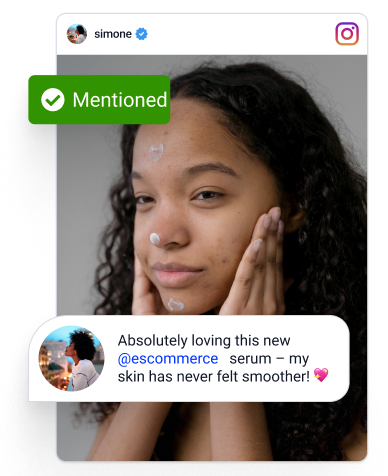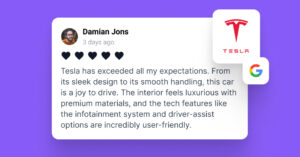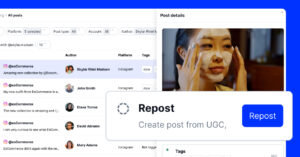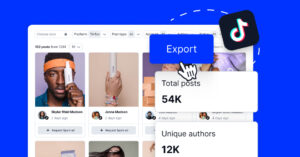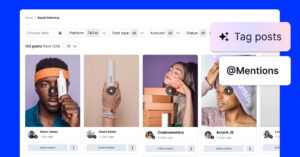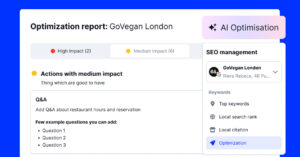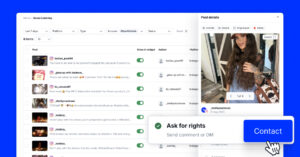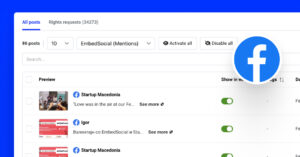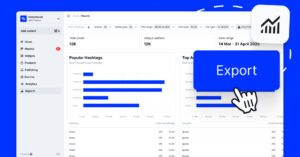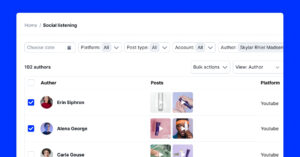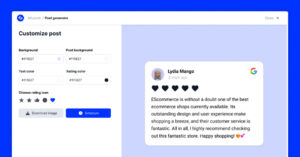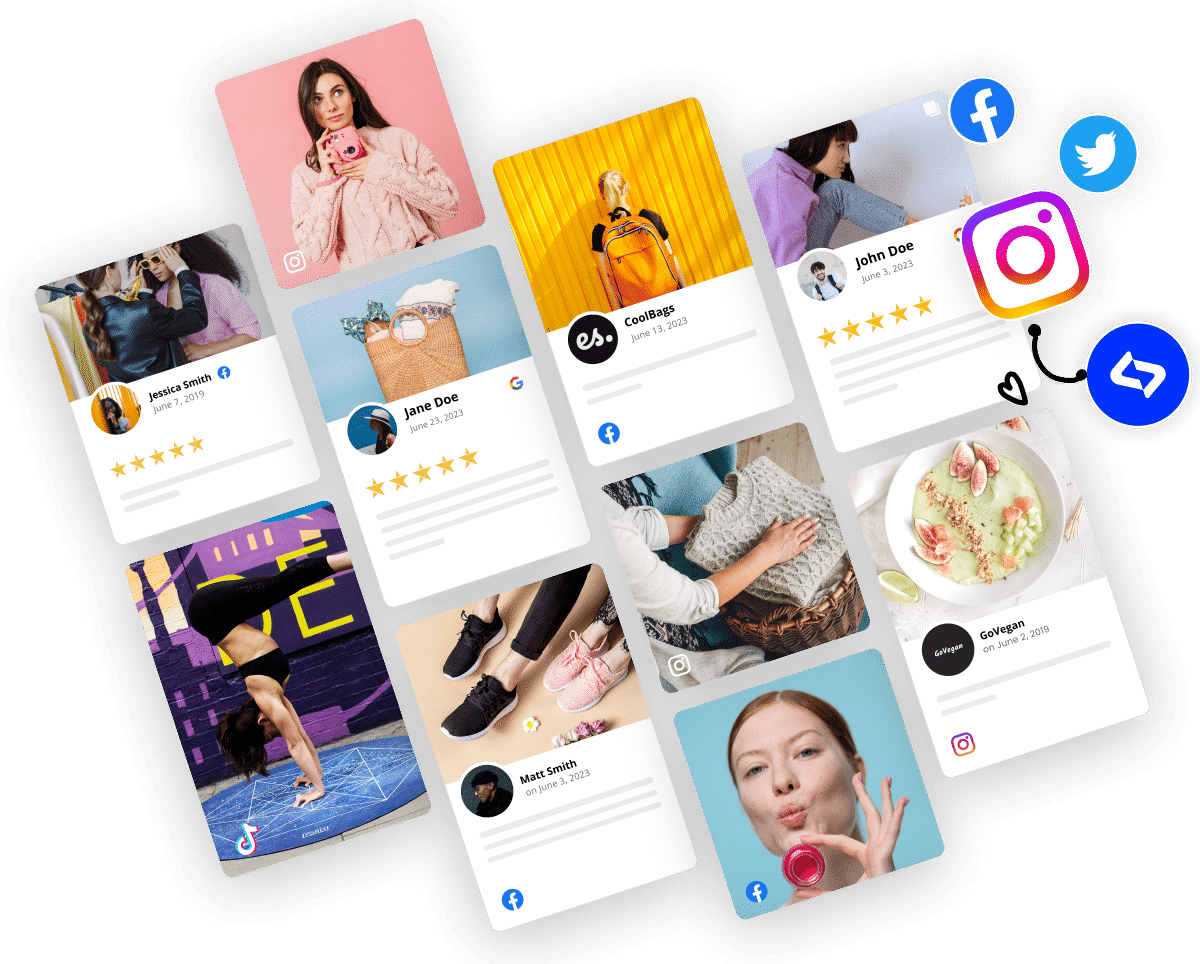A social listening API enables you to tap into real-time conversations across various social media platforms, including Instagram, TikTok, X, and more—all without needing to open a dashboard.
It’s an excellent way for developers and marketers to monitor mentions, track hashtags, and reuse user-generated content inside their own tools and workflows.
Regardless of whether you want to display your social proof or build a brand sentiment alert system, the right API gives you complete control over these processes.
So, let me walk you through the top social listening APIs available today, so you know which one to choose for your specific needs and goals.
What is a social listening API?
A social listening API is a tool that lets you programmatically track and collect public conversations from social media platforms to reuse them in your workflow.
Instead of using the built-in dashboard offered by third-party social listening tools, developers can connect directly to the social media data streams these platforms access. Then, they can collect all the mentions, hashtags, reviews, and comments they want.
These APIs are often used to monitor brand reputation, do a sentiment analysis, discover trends, or even automate the collection of social proof.
Unlike basic social media APIs that offer access to your profile or page content, a social media listening API focuses on what others are saying across the web.
In short, it’s a flexible, scalable way to turn social media data into actionable insights.
Why use social listening software with API access for custom integrations?
Using social listening software with API access provides you with full control over your social media data and its utilization. Here are the benefits:
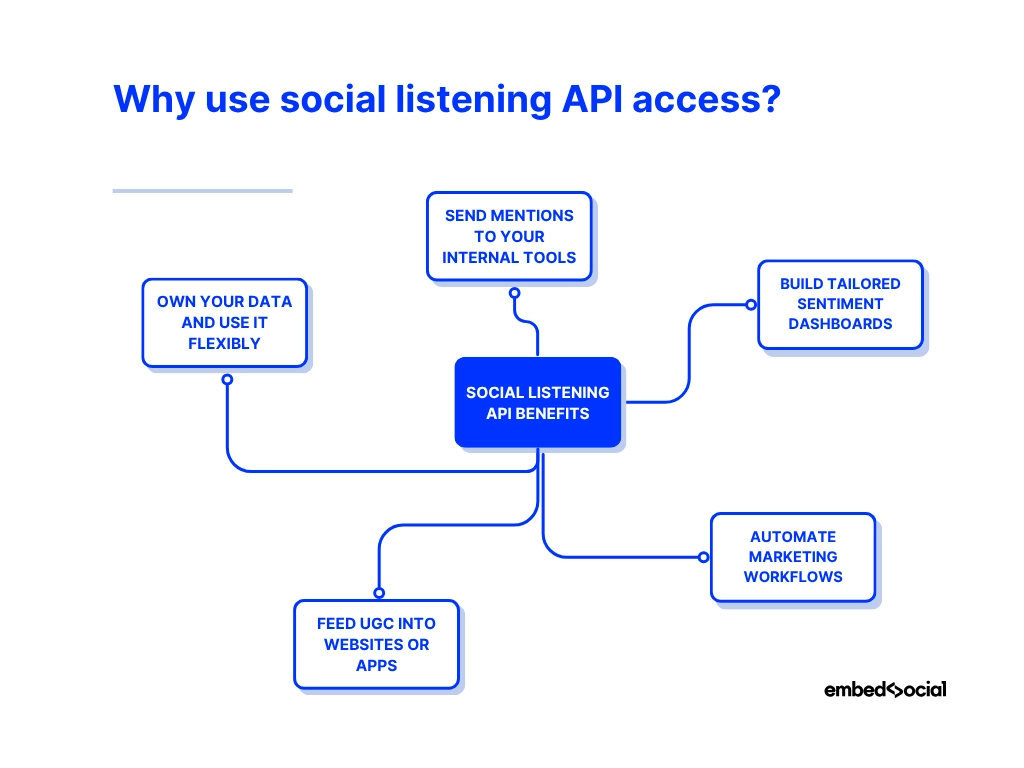
- Send mentions to your internal tools – connect Slack, Notion, or CRMs to create custom alert systems;
- Build tailored sentiment dashboards – visualize brand sentiment in your BI platform instead of using someone else’s UI;
- Automate marketing workflows – trigger email campaigns or actions based on social conversations in real time;
- Feed UGC into websites or apps – embed UGC and online reviews where they matter most using verified user content;
- Own your data and use it flexibly – skip vendor lock-ins and access raw, structured social listening data that fits your stack.
You don’t get this kind of flexibility with standalone dashboards!
What to look for in a social listening API?
If you are looking for social listening software with API access for custom integrations, you first have to consider your actual needs and goals. That said, a few core features make all the difference. So, I’m listing the essentials to keep an eye on:
1. Platform coverage
Make sure the API supports the platforms where your audience is most active—like Instagram, TikTok, X, Reddit, and YouTube. Broad coverage means better context and more complete data.
2. Real-time access
Look for APIs that offer real-time or near-instant data delivery. This is key for reactive campaigns, crisis monitoring, and trend detection as things unfold.
3. Filtering & search
A good API should let you filter by keyword, hashtag, sentiment, language, or even source. The more control you have over what gets pulled, the less cleanup you’ll need later.
4. Sentiment & enrichment
Many APIs offer sentiment scores, relevance tags, or even emotion classification. These enrichments help you sort the noise and focus on what matters.
5. Historical data
Some APIs give you access to historical mentions and industry trends. This is useful for benchmarking, reporting, and long-term brand tracking.
6. Rate limits & scalability
If you’re processing a lot of data, check how many requests per second or day the API allows. Scalable plans and generous rate limits can save you headaches later.
7. Integration options
REST APIs are standard, but some platforms offer SDKs, webhooks, or GraphQL. Choose one that fits your team’s preferred development stack.
EmbedSocial has all that and more!
We built (and continue to perfect) EmbedSocial to be the best platform for UGC display and social proof automation. Additionally, it offers powerful data access and integration capabilities for all modern brands, regardless of their niche or size.
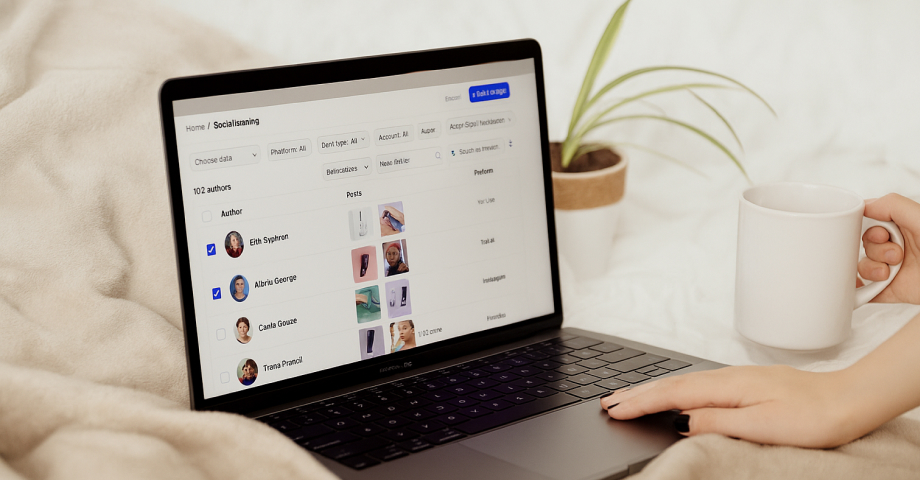
This API is built to help brands not just monitor but reuse content, making it an excellent choice for embedding social proof and powering custom marketing workflows:
- Connects to major social platforms – Instagram, TikTok, Facebook, Google, YouTube, and X;
- Provides filtered UGC access – get tagged posts, mentions, and online reviews based on keywords or hashtags;
- Offers easy-to-use API key access – quick setup for developers building custom dashboards or displays;
- Includes moderation and publishing tools – combine data collection with content control and distribution.
Below, you can check out all the platforms we can access for users looking to monitor conversations, collect user-generated content, and feed this social data into their own systems. You can get tagged posts, mentions, reviews, and stories of all kinds.
EmbedSocial is top social listening API for brands that want to automate social proof collection and display across multiple locations or channels.
Platform API integrations offered by EmbedSocial
To make the most out of user-generated content, EmbedSocial connects directly with the world’s most popular platforms. Each integration allows you to automatically collect reviews, posts, and media into your EmbedSocial account, keeping your widgets fresh without manual work.
Below, you’ll find all the platforms you can integrate with EmbedSocial, along with the type of content they provide, practical use cases, key benefits, and how often they update.
Google Business Profile API integration
What it connects: Google Business Profiles, pulling both reviews and posts.
Content types you can collect:
- Customer testimonials and reviews (ratings + text);
- Google posts, updates, and offers.
Use cases:
- Showcase customer trust with Google reviews on your site;
- Republish Google posts as fresh content for local SEO;
- Centralize all feedback for easier monitoring.
Key benefit: Directly boosts trust and local visibility by embedding authentic reviews and updates.
Update frequency: Google reviews are pulled every 15 minutes.
Facebook API integration
What it connects: Facebook Pages and mentions to sync posts, reviews, and media.
Content types you can collect:
- Page reviews and recommendations;
- Brand mentions;
- Public posts;
- Photos and videos.
Use cases:
- Highlight customer testimonials;
- Repurpose Facebook posts as on-site content;
- Increase credibility with social proof.
Key benefit: Turns Facebook into a reliable content source for both reviews and engaging updates.
Update frequency: Facebook posts are automatically updated every 3 hours. And every 30 minutes with Premium and Enterprise plans. Facebook reviews are pulled every 24 hours.
Instagram API integration
What it connects: Instagram Business accounts and branded hashtags, mentions, and stories.
Content types you can collect:
- Account posts (photos, carousels, videos);
- Hashtag content;
- Mentioned posts;
- Instagram Stories (when enabled).
Use cases:
- Create live feeds of UGC around hashtags;
- Showcase your brand’s latest posts on product pages;
- Run hashtag campaigns and highlight results.
Key benefit: Transforms Instagram into a continuous stream of authentic customer-generated content.
Update frequency: Instagram content is automatically updated every 3 hours. And every 30 minutes with Premium and Enterprise plans. The autoupdate time for the free plan is every 24 hours.
Threads API integration
What it connects: Your official Threads account, mentions, and keywords.
Content types you can collect:
- Text-based Threads;
- Mentions and keywords;
- Images and media attached to Threads posts.
Use cases:
- Repurpose Threads posts on your blog or website with social media widgets.
- Conduct Threads social listening to discover leads, industry trends or crisis management.
Key benefit: Offers a fresh way to amplify Threads content for early adopters.
Update frequency: The content is automatically updated every 3 hours. And every 30 minutes with Premium and Enterprise plans.
TikTok API integration
What it connects: TikTok accounts, videos, and mentions.
Content types you can collect:
- Short-form TikTok videos;
- TikTok mentions;
- Captions and metadata.
Use cases:
- Display your latest TikToks as website widgets;
- Showcase community-driven campaigns;
- Conduct social listening on TikTok to discover customers and potential collaborators.
Key benefit: Brings high-performing short video content directly to your site.
Update frequency: TikTok content is automatically updated every 3 hours. With Premium and Enterprise plans, updates occur every 30 minutes.
X (Twitter) API integration
What it connects: Twitter (X) accounts, hashtags, keywords, and mentions.
Content types you can collect:
- Tweets and replies;
- Hashtag-based posts;
- Keywords and mentions;
- Media in tweets (photos, GIFs, videos).
Use cases:
- Discover brand mentions in real time;
- Showcase live hashtag campaigns;
- Republish your own tweets for added visibility.
Key benefit: Real-time integration makes it ideal for campaigns and time-sensitive content.
Update frequency: Twitter content is automatically updated twice per week, every Tuesday and Friday.
YouTube API integration
What it connects: YouTube channels, playlists, and hashtags.
Content types you can collect:
- Uploaded videos;
- Playlists;
- Hashtags;
- Video titles, descriptions, and thumbnails.
Use cases:
- Create video galleries or playlists on your website;
- Highlight tutorials, testimonials, or promotional videos;
- Drive more video views through embedded widgets.
Key benefit: Enhances the discoverability of your video content beyond YouTube.
Update frequency: YouTube content is automatically updated every 24 hours to keep your website fresh with the latest videos.
LinkedIn integration
What it connects: Company or brand pages.
Content types you can collect:
- Published posts;
- Images, videos, and article links.
Use cases:
- Share your LinkedIn page and professional updates on your site;
- Repurpose content for employer branding;
Key benefit: Helps you leverage professional credibility through LinkedIn content.
Update frequency: LinkedIn content is automatically updated every 3 hours, and every 30 minutes with Premium and Enterprise plans.
RSS feed integration
What it connects: Any RSS feed URL.
Content types you can collect:
- Blog articles;
- News updates;
- Feed items with metadata.
Use cases:
- Display company news on your site;
- Pull third-party industry updates into your platform;
- Keep content sections fresh with automated feeds.
Key benefit: Adds flexibility by letting you connect almost any source that outputs an RSS feed.
Update frequency: RSS feeds are automatically updated every 3 hours and every 30 minutes with Premium and Enterprise plans.
Pinterest integration
What it connects: Pinterest accounts.
Content types you can collect:
- Pins (images, descriptions, links);
- Board collections.
Use cases:
- Showcase lifestyle or product inspiration;
- Create galleries of user-submitted Pins;
- Support visual marketing campaigns.
Key benefit: Turns Pinterest into a shoppable or inspirational gallery on your site.
Update frequency: Pinterest content is automatically updated every 3 hours, and every 30 minutes with Premium and Enterprise plans.
Vimeo integration
What it connects: Vimeo channels and accounts.
Content types you can collect:
- Uploaded Vimeo videos;
- Titles, descriptions, and thumbnails.
Use cases:
- Showcase high-quality branded videos on your site;
- Create Vimeo-powered video galleries;
- Repurpose professional content outside Vimeo.
Key benefit: Enables businesses to leverage Vimeo’s professional video hosting for seamless on-site display.
Update frequency: Vimeo content is automatically updated every 3 hours, and every 30 minutes with Premium and Enterprise plans.
Yelp integration
What it connects: Official Yelp business page.
Content types you can collect:
- 3 random customer reviews (ratings + comments);
- Reviewer details and timestamps.
Use cases:
- Display Yelp reviews on your website;
- Strengthen credibility with recognized third-party reviews;
- Monitor Yelp reputation from one dashboard.
Key benefit: Provides extra trust by embedding one of the most influential local review sources.
Update frequency: Reviews update daily or within a few hours after being published on Yelp.
Trustpilot integration
What it connects: Reviews from a Trustpilot page
Content types you can collect:
- Service and product reviews;
- Star ratings and reviewer info.
Use cases:
- Showcase verified Trustpilot reviews on landing pages;
- Strengthen purchase confidence with third-party credibility;
- Centralize all Trustpilot feedback alongside other platforms.
Key benefit: Boosts transparency and trust with one of the most authoritative online review sources.
Update frequency: Trustpilot is the only platform on this list that does not offer an API connection, so users have to manually collect reviews when there are new ones.
Conclusion: Choose a flexible social media listening tool
Whether you want to monitor brand mentions, analyze sentiment, or display UGC, a social monitoring API gives you the flexibility to do it your way.
From lightweight options like Mention and Keyhole to full-scale platforms like Brandwatch, there’s a solution for every brand, team size, and tech stack.
However, if your goal is to turn real social content into actionable marketing assets, start with EmbedSocial—it’s built for UGC reuse and easy to integrate.
So, test what fits, and build the social workflows you actually need for all the various social media channels you maintain online.
FAQs on social listening APIs
Do I need developer skills to use EmbedSocial’s integrations?
No. The dashboard is no-code friendly, though developers can use the API for custom work.
How often does data update in EmbedSocial?
Depends on the platform: Google reviews update every 15 minutes, Instagram posts every 3 hours, Twitter feeds twice per week.
What’s the difference between social listening and social monitoring?
Monitoring tracks specific mentions; listening analyses patterns, sentiment and broader context.
Can I filter content by hashtags or keywords?
Yes. You can refine by hashtags, keywords, or mentions for precise results.
What happens if a platform changes its API policies?
EmbedSocial manages compliance and adjusts integrations to keep your data flowing.
What is the difference between a social listening API and a social media API?
A social media API gives access to your own account’s data (posts, followers), while a social listening API helps monitor public conversations about your brand across platforms.
Can I use a social listening API to monitor hashtags in real-time?
Yes. Most top social listening APIs offer real-time access to hashtags, mentions, and even sentiment updates.
Which is the best social listening API for displaying user-generated content?
EmbedSocial is ideal for displaying UGC like reviews and tagged posts, offering a dedicated API for pulling and embedding that content easily.
